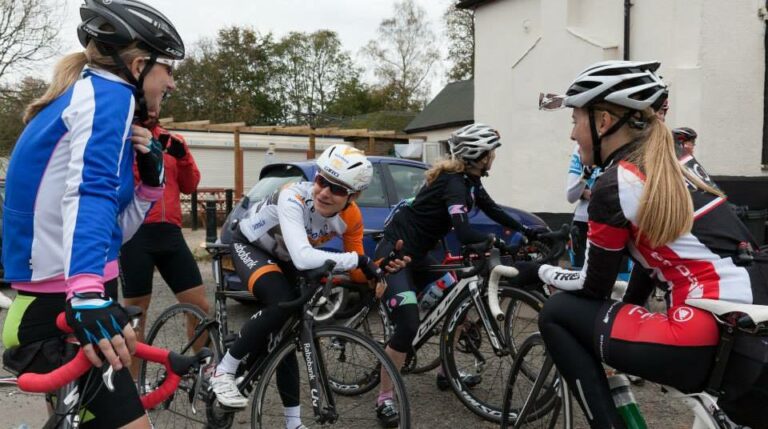
Experienced cyclists will tell you that although serious crashes are rare improper bike set up and awkward posture can lead to accidents and injuries. While most injuries can be easily treated, either at home or with professional physiotherapy,it is crucial to get into good cycling habits to avoid accidents from the start.
And don’t forget that both yoga and stretching can go a long way to avoiding injury.
We enlisted the help of physiotherapist Tom Grey from Summit Physio to run through the most common injuries, how to avoid them and how to treat them:
Cycling Injury: Achilles Tendonitis

This is an inflammation of the tendon, usually caused by overuse or the high intensity of cycling. Cyclists will feel pain and stiffness over the tendon which may increase with strenuous activity.
Tip: Take a break from training for a few days to let the inflammation calm down. Use an ice pack to soothe the tendon and take ibuprofen to relieve swelling and pain.
Having your bike seat too high and your toes pointed down causes the calves to be constantly contracted, which leads to overstretched tendons. Lowering your seat and making sure your toes point upwards throughout the bottom portion of the pedal stroke will even out the muscles used and allow the tendon to rest when required.
Cycling Injury: Patellar Tendonitis

This occurs most often as a result of stress being placed on the supporting structures of the knee. For cyclists, tenderness below the kneecap may be due to a seat that is too low or from riding for too long using high gears. Consequently, the quadriceps muscles become overworked, causing pain in the tendon.
Tip: Raise the seat. This means you’ll use more of the hamstring and gluteal muscles, removing some of the strain from the quadriceps and the patellar tendon.
If you ride in high gears, another trick is to try varying your pedal tempo. Introducing bursts of high speed pedalling throughout your training can prevent injury and build up your cardiovascular system too.
Cycling Injury: Muscle Tightness and Fatigue

Every cyclist recognises that aching feeling you get after a decent biking session. Peddling is a cardiovascular activity that predominantly uses the quadriceps, hamstrings and gluteus maximus muscles, which if not properly warmed up, can lead to muscle tightness. During a long ride, lactic acid also builds up in the legs causing fatigue, tightness and pain.
Tip: Make sure you complete a proper warm up before you start cycling, and cool down afterwards by fully stretching out. If you’re at amateur status and don’t have the luxury of a team massage, use a foam roller to smooth out your muscles at the end of a ride. This may hurt temporarily, but it will ensure elasticity remains in your muscles, which will avoid tightness in future.
Cycling Injury: Back and Neck Pain
In an ideal world, a professional bike fitting would be mandatory with every bike, but unfortunately many cyclists suffer from back and neck pains due to improper fitting.
Tip: If you can afford it, get an expert to alter your bike so it accommodates your exact size. A professional bike fit can be money well spent in the long term.
A more frugal alternative is to use kinesiology tape on your lower back to stimulate the skin in the area, boosting muscle function and decreasing pain.
Also worth a read:
9 stretches to help cyclists avoid injury
Coming back from injury: Lea Davison’s top tips
How to: Buy the best bike for your budget






